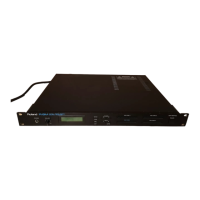MIDI Implementation
r
^
'
\
How to read
a MIDI Implementation
chart
O
: MIDI message that can
be received or transmitted
X
: MIDI message that cannot
be
received
or transmitted
•
Basic channel
This is the range of MIDI channels
on which MIDI message
can be transmitted
(received). The MIDI channel
setting will
be preserved even
when the power is
turned off.
#Mode
Devices which have more
than one receive channel
normally operate in
mode 3 Comni off, poly).
Reception
:
Only the MIDI
message of the specified
channel is received,
and played polyphonically.
Transmission
: MIDI message
is transmitted on the
specified channel.
• Mode indicates
the mode messages
handled by MIDI.
•
Note
number
This is the range
of note numbers that
can be received. Note number
60 is middle
C
CC4).
•
Velocity
This is
the range over which
velocity can
be transmitted
(received) for a
"note on" or
"note off" message.
•
Aftertouch
The
R-8M does not
use this message.
•
Pitch bender
The range over which
the pitch bender will affect
the pitch can
be set independently
for each section.
• Control change
This lists the
control numbers and control
functions which can
be received. The
functions controlled by
General Purpose
Controllers can
be freely specified. For
details, refer to MIDI implementation.
•
Program change
The listed program
numbers are the numbers
of the data.
The number listed here
is one less than
the Patch or Feel Patch
that will be selected.
• Exclusive
Reception
of exclusive
messages can be turned
on/off by
the exclusive switch (setup).
•
Common, Real-time
These MIDI messages
are
used
when synchronizing
with sequencers
or rhythm machines.
The R-8M can
synchronize
its
Regular Feel (Groove)
to song position pointer
and real-time messages.
•
Other
These messages
are used mainly to
keep a MIDI system
running correctly,
and include active sensing
(to check for broken
MIDI cables)
and all
"note off messages"
(to stop all
currently sounding notes).
129

